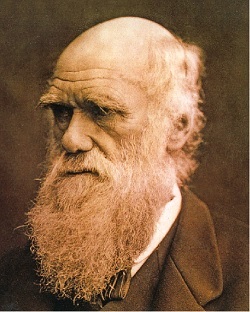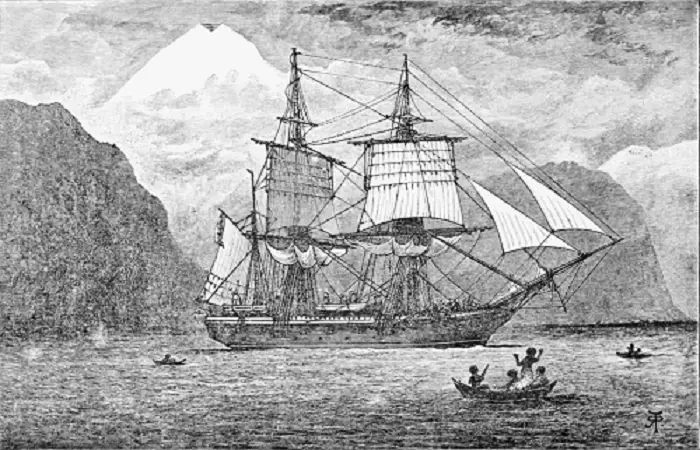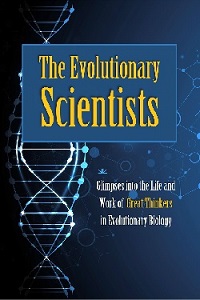|
TRANSLATE THIS ARTICLE
Integral World: Exploring Theories of Everything
An independent forum for a critical discussion of the integral philosophy of Ken Wilber
 David Christopher Lane, Ph.D.
Professor of Philosophy, Mt. San Antonio College Lecturer in Religious Studies, California State University, Long Beach Author of Exposing Cults: When the Skeptical Mind Confronts the Mystical (New York and London: Garland Publishers, 1994) and The Radhasoami Tradition: A Critical History of Guru Succession (New York and London: Garland Publishers, 1992). David Christopher Lane, Ph.D.
Professor of Philosophy, Mt. San Antonio College Lecturer in Religious Studies, California State University, Long Beach Author of Exposing Cults: When the Skeptical Mind Confronts the Mystical (New York and London: Garland Publishers, 1994) and The Radhasoami Tradition: A Critical History of Guru Succession (New York and London: Garland Publishers, 1992).If there's a singular topic Integral students need to be educated on it is evolutionary theory, given their frequent but uninformed use of the term "evolution". These short biographical chapters about evolutionary theorists have been written by different philosophy students of professor David Christopher Lane. (FV)
THE EVOLUTIONARY SCIENTISTS
Glimpses into the Life and Work of Great Thinkers in Evolutionary Biology
Coyne|
Crick|
Darwin|
Dawkins|
Diamond|
Dobzhansky|
Eldridge|
Gould|
Haldane|
Hamilton |
Lamarck|
Lovelock|
Mayr|
Mendel|
Monod|
Spencer|
Trivers |
Wallace |
Weismann |
Williams |
E.O. Wilson
Charles DarwinAriel StubbsCharles Robert Darwin was a famous naturalist, geologist, and zoologist. He was born in Shrewsbury, England, on February 12, 1809, and died in Downe, England on April 19, 1882. Darwin and his five siblings were children to Robert Darwin, a wealthy doctor, and Susannah Darwin. His grandfather, Erasmus Darwin, was a physician and scientist who had also contributed to evolutionary ideas. Both sides of the family were Unitarian, though his mother's side adopted Anglicanism. When Darwin was eight years old, his mother passed away. Later in life, Darwin married Emma Wedgwood, his first cousin on his mother's side, and together had ten children, only seven surviving past their youth.  Charles Darwin In his younger years of education, Darwin did not enjoy the traditional teachings of literature and foreign language, but he was fascinated by science and the natural world, which his schools did not teach. Darwin's college education began when his father sent him to University of Edinburgh to study medicine in 1825. During his time there, he learned taxidermy from John Edmonstone, joined a student natural-history group that debated Christian concepts of science, assisted Robert Edmond Grant in his research on marine invertebrates, presented his own discovery on how the spores in oysters were actually leech eggs (1827), learned the classification of plants, and helped work on collections at the University Museum. None of this had to do with medicine—Darwin hated the boring lectures and graphic demonstrations—so Darwin's father transferred him to Christ's College, Cambridge in 1828, where Darwin was supposed to be studying for a Bachelor of Arts degree to become an Anglican country parson. There, Darwin spent his time riding and shooting, collecting beetles and drinking, but he was still able to further pursue his interests in science, particularly botany and zoology. He followed botany professor Reverend John Stevens Henslow, who believed studying natural science was another part of religious work. In 1831, Darwin finally earned his Bachelor of Arts degree, placing tenth amongst the other students. He then went on a trip to Wales to study geology under the Reverend Adam Sedgwick, another professor at the school. Officially a graduate, Darwin sought to enter the world, ready for newer sights. At the suggestion of Henslow and the inspiration from Alexander von Humboldt (he had published Personal Narrative of Travels, which Darwin read), Darwin embarked on the Beagle, a ship that would travel along the coasts of South America and many islands. Though hired as the captain's mate and fellow, he eventually became the ship's naturalist. Along the voyage, Darwin gathered many specimens of plant and animal life which would later contribute to his theory of evolution by natural selection. In Darwin's theory of evolution, all currently existing species descended from a common ancestor. His theory covers five simple ideas: “life has existed for a long time, offspring are overproduced, traits are inherited from parents, in each species exists individuals, and nature selects those with traits more apt for survival.”
Each of these previous concepts serve for a deeper understanding for the final one:
The process of evolution by natural selection requires an extremely long-time frame to have reached the current stage of diversity, hence the concept that life has existed for many, many generations. The large amounts of offspring produced by an organism allows for a higher survival rate, and offspring that happen to be more fit to survive have even better chances. The offspring that live are able to carry on the traits that helped them survive, traits that were inherited from their parents. They are able to reproduce with other individuals in their species, who have their own variations that helped them to survive as well. Characteristics not as suitable to a species' environment eventually fall behind, leading to a generation of species without those characteristics—a generation more apt for survival. Applying how species branch out to other areas over time and would have also had to adapt to those different environments explains the diverse populations that are present today. By introducing the idea that populations evolve through natural selection, Darwin revolutionized evolutionary thinking. His proposition of natural selection provided an explanation on how evolution happens, an explanation that has withstood many tests and challenges over the years. Despite the controversy that surrounds it, the theory still stands strong. For further reading, consider The Voyage of the Beagle (published in 1839) by Charles Darwin. This book details the journey Charles Darwin embarked on around South America and the southern seas. Here, Darwin documents his five-year trip, writing about the different places he visited and the various species he encountered. The journal serves as a good way of understanding Charles Darwin's mind, as well as gives background to his other book, On the Origin of Species (published in 1859), as Darwin's trip on the Beagle was what led to his theory of evolution. On the Origin of Species, which is one of the few great scientific books that can be read by both the specialist and non-specialist, is the book where Darwin introduced the idea of evolution through natural selection. It is also considered to be the foundation of evolutionary biology. In it, Darwin goes into depth about natural selection and its effects on how populations evolve, providing evidence from his time on the Beagle alongside other research. Another book by Darwin is The Descent of Man (published in 1871), where he describes how evolutionary theory applies to human evolution. He discusses the differences between human races, as well as the differences between the sexes. Darwin also details his theory of sexual selection and how females play a more dominant role in mate choice.
Further Reading1. On the Origin of Species, John Murray, 24 November 1859. 2. The Descent of Man, John Murray, 24 February 1871.  Reproduction of frontispiece by Robert Taylor Pritchett from the first Murray ill. ed., 1890: HMS Beagle in the Straits of Magellan at Monte Sarmiento in Chile.
MSAC Philosophy Group

The theory of evolution has a long history. However, it was not until Charles Darwin and Alfred Russel Wallace discovered that the wide variety of species we presently see were largely the result of natural selection did evolutionary studies have a solid, scientific basis. In the past one hundred and sixty years, a number of eminent biologists have contributed to our understanding of how complex life forms emerged from simpler, more rudimentary ones. Comment Form is loading comments...
|